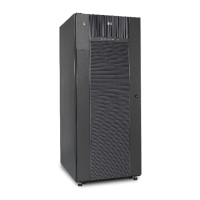SCSI TID map for Fibre Channel adapters
When an arbitrated loop (AL) is established or reestablished, the port add resses are
assigned auto
matically to prevent duplicate TIDs. With the SCSI over Fibre Channel
protocol (FC
P) , there is no longer a need for target IDs in the traditional sense.
SCSI is a bus-oriented protocol requiring e ach device to have a unique address since all
commands go to all devices. For Fibre Channel, the AL-PA is used instead of the TID to
direct packets to the d esired destination.
Unlike trad
itional SCSI, when control of the loop is acquired, a point-to-point connection
is established from initiator to target. To enab le transparent use of FCP, the operating
system maps a TID to each AL-PA.
Thehostmap
s SCSI protocol to Fibre Channel protocol and detects and accesses Fibre
Channel-connected devices using device files (/dev/dsk/c*t*d* and /dev/rdsk/c*t*d*)
in the same way as for SCSI-connected devices. The device files for Fibre
Channel-connected devices are configured in a different way from SCSI-connected
devices,
because Fibre Channel supports 126 ad dresses per path while SCSI suppor ts
16 TIDs per path.
The following table identifies the fixed mappings between the TID (drive) values assigned
by the operating system a nd the Fibre Channel native addresses (AL_PA/SEL_ID) for
Fibre Channel adapters. The controller number (the dks value in /dev/dsk/dks*d*l*s*)
depend
sontheserverconfiguration, and a d ifferent value is assigned per e ach column.
The mapping cannot be done when these conditions exist:
• disk array devices and other types of devices are connected in the sam e loop
• inform
ation for unused devices remains in the ser ver system
• multiple ports participate in the same arbitrated loop
56
Disk array supported emulations

